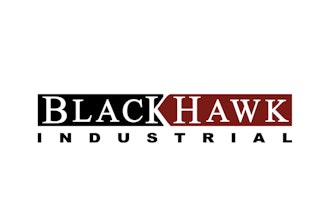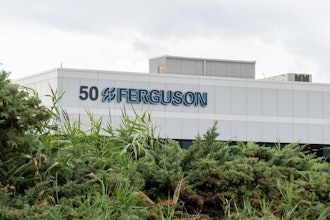Without question, marks used by a business to identify either its services (service marks) or its goods (trademarks) can be among its most valuable assets. Ironically, like goodwill, a value is seldom listed on the balance sheet of a business in connection with its marks. Nevertheless, the service marks and trademarks of a business are very much an integral part of its going concern value. One need only reflect upon the fact that a bottle of designer water with a prestigious brand name sells for substantially more than a generic container of water, even if they came from the same faucet, to realize the value of a trademark. Also, consider the fact that independent retailers are willing to give up six to eight percent of their gross revenues for the privilege of brand name identity that franchisors offer.
The other day I received an e-mail inquiry from a good client. It went something like this: “Isn’t it true that if I register the name of my business on the Internet, it is much cheaper than getting a trademark registration?” I wrote him back and told him he was correct about the cost being much cheaper. However, it is also a classic example of getting what you pay for. Domain name registration on the Internet protects only the exact letters that have been registered. So if one simply varies one letter or adds one letter to a phrase, a new domain name can be registered with no questions asked. Even more importantly, registration of a domain name does not, in and of itself, offer any protection beyond setting aside that particular clause as a domain name on the Internet for the registrant. For instance, I own the domain name BuyingGroups.com. I use that web page to provide legal information concerning purchasing alliances. The mere fact that I have a domain name registered would not protect me against another law firm who advertises itself as the “Buying Groups Law Firm,” even if they did such advertising on the Internet. In fact, if I did not have BuyingGroups.org registered, that law firm could register it as a domain name.
So how does a company go about protecting the name of its business? The first step is in choosing the correct name. Not only does the company need to select an attractive name that would help market its services, but it also must be a name that does not infringe upon the trademark rights of others. A trademark search should be conducted. At a minimum, the records of the U.S. Patent and Trademark Office should be searched. A federal trademark search can now be done by anyone online. The web address ishttp://www.uspto.gov/web/menu/tm.html. It is equally important for the company to have a search done in each state where he intends to conduct business under that name. Typically, state trademark records are also accessible by Internet through the Office of the Secretary of State of that state. There is no charge for online federal trademark searches and usually no charge for state searches, either. If no conflicting registrations are found after doing these searches, it would be money well spent to have a trademark lawyer also perform a search on the mark under consideration. The level and the cost of the search will vary, depending upon how extensively the mark will be used. There is a wide range of factors which go into considering whether the proposed mark is in conflict with existing registrations or pending applications which require the experienced judgment of a seasoned trademark lawyer to be analyzed.
Once the trademark is selected, the next step is to protect it through registration. If the service mark is only going to be used within one state, then registration with the Secretary of State of that state is all that is needed. If the mark is to be used in several states, then a federal registration should be considered. There are two ways a service mark can be registered. At a minimum, it should be registered as a word mark, meaning that just the words, without any accompanying design or logo would be registered. That way, those words will be protected, regardless of any changes in the logo the owner may make from time to time. The second way of registering the service mark would be to include the stylized logo. A design mark registration would preclude a competitor from changing the words of the mark, but using the same type of logo. If the logo is an important aspect of the service mark, then both types of registrations are recommended.
It is very important that the search be done before either a state or federal registration is undertaken. Strange as it may seem, a company could be better off using an unsearched mark without registration, than to register an unsearched mark. Some registered owners maintain monitoring services to alert them of all new applications and registrations for federal, state and even domain names. If an application for an unsearched mark comes anywhere near the scope of protection offered by such a monitoring service, it may well trigger a cease and desist letter from a lawyer. I will confess to writing numerous such letters to unsuspecting trademark applicants.
Actual usage of the mark is a key requirement to establishing ownership and registration such mark. Trademarks are like muscles. The more they are used, the stronger they get. Common law recognizes that marks have rights of protection, even if they are never registered. The priority of a mark is based upon first use. Common law protection extends only to the geographic area where the mark is actually used. The protection offered by registration extends to the full scope of the jurisdiction providing the registration. A federal registration of a trademark offers nationwide protection even if it is actually used in only three or four states.
The next step in protecting a service mark is to prevent others from using or registering marks that could be confusingly similar. This can be done through a monitoring service. It can also be done on a less expensive basis by repeating the search process outlined above from time to time to see if there have been any new registrations filed at either the federal or the state level which could pose a problem. When such conflicting registrations or applications are found, the company should have its lawyer write a cease and desist letter to the infringing party. If others are allowed to use the same or similar marks for the same or similar services, the mark becomes so weak, that it is no longer protectable.
The final step in protecting a mark is complying with the additional filing deadlines required by law. A Statement of Use must be filed on a federal registration between the fifth and sixth anniversary date of registration in order to avoid cancellation. Renewal papers must be filed between the ninth and tenth anniversary dates to avoid expiration dates. State registrations generally require renewals every five or ten years. These deadlines must be kept up with, and because they are so far off, it is very easy to lose track of them.
Just as the prudent businessman maintains liability and casualty insurance, so will the prudent company take the necessary steps to select and protect the heart and sole of his business – its name.
Harry B. Ray is the owner of Harry B. Ray & Associates, PLLC and practices in Chattanooga,Tennessee. For more information, visit www.BuyingGroups.com or www.hbrlaw.com.
© Harry Ray, Harry B. Ray & Associates, PLLC, Chattanooga,TN. March, 2013. All rights reserved. This article may not be reprinted nor reproduced in any manner without prior written permission by the author.
Certification as an Intellectual Property Law Specialist is not currently available in Tennessee.
This article provides general coverage of its subject area. It is provided free, for informational purposes only, with the understanding that the author, publisher and/or publication does not intend this article to be viewed as rendering legal advice or service. Readers should not act upon this information without seeking professional counsel. If legal advice is sought or required, the services of a competent professional licensed should be sought. The author and/or publisher shall not be responsible for any damages resulting from any error, inaccuracy or omission contained in this publication.


















